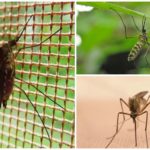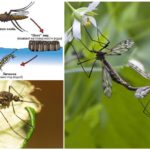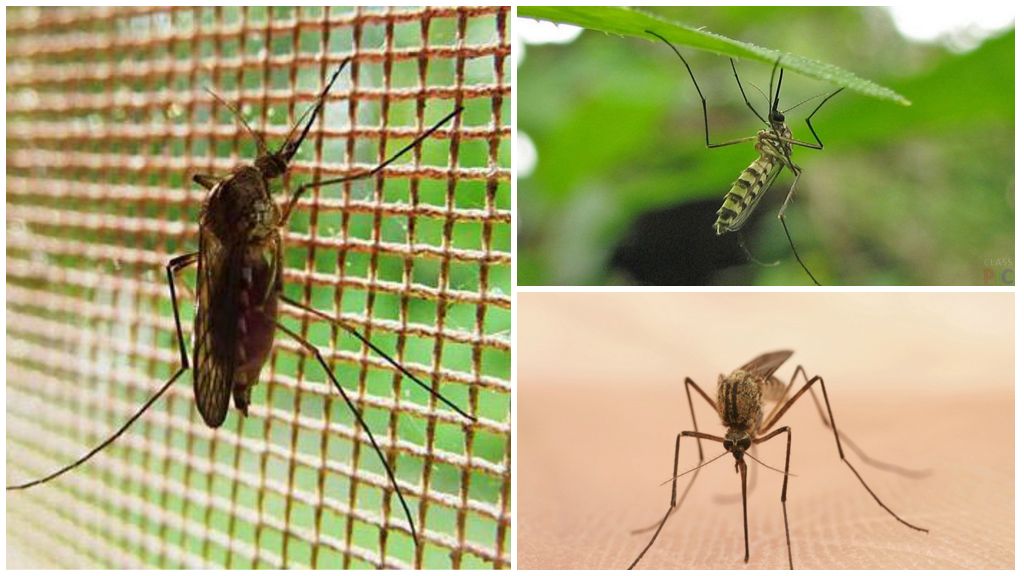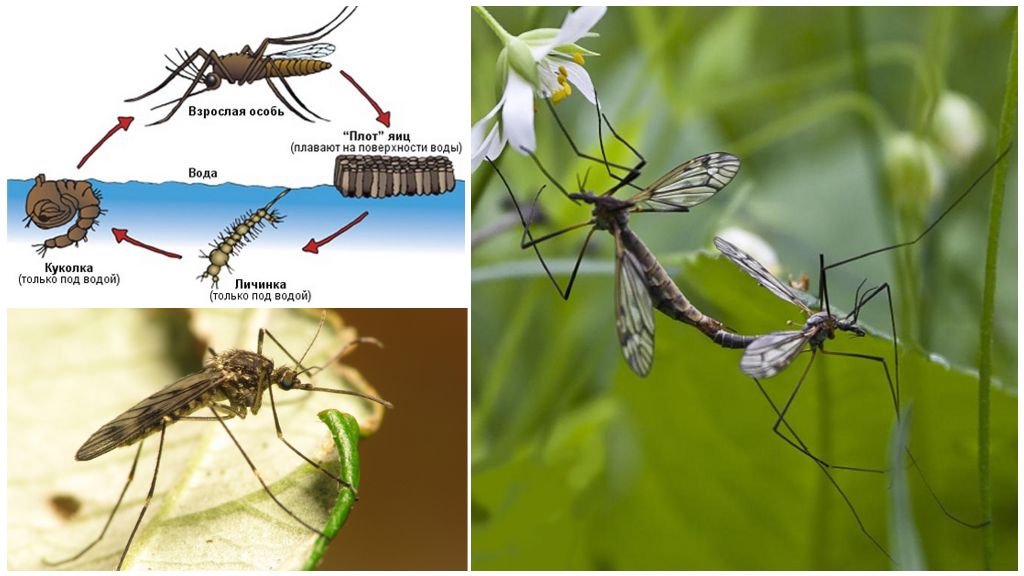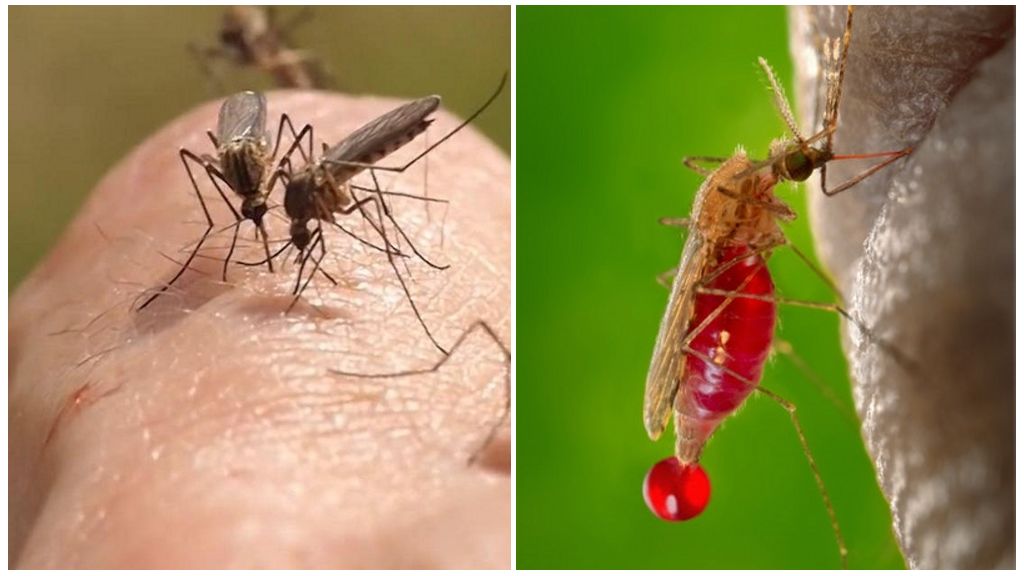Where do mosquitoes come from
Content
- Mosquito
- Mosquito breeding cycle
- Vital activity of a mosquito
Where do mosquitoes come from after winter is over, in city apartments on the 9th floor and above, where the cold weather sets in - the main questions that interest ordinary people. Mosquitoes flocks fly in the forest, park, near the house, in the country, city park, even in apartments. But at one moment they simply disappear. Below is information on how insects survive the winter, their reproduction rate, the appearance of the larvae.
Optimal conditions for mosquitoes
The temperature at which insects begin to be active is plus 12 degrees Celsius and above. Mosquitoes do not like heat, drought and cold. The optimum temperature for them is kept within 20 degrees Celsius. With a decrease in climatic parameters, insects develop more slowly, almost cease to multiply. The same thing happens with drought, temperatures above 25 degrees Celsius.
The second important condition for mosquitoes is the presence of a humid environment. Insects numerous colonies live in the forest, near the marshes, near the rivers. All because maggots develop in water or wet soil. If this condition is not met, the population size is significantly reduced.
Interesting!
Relatively recently, mosquitoes adapted to live in urban areas. Inhabit basements, damp entrances. The female is able to lay eggs without fertilization. For this reason, the generation of urban mosquitoes is somewhat weaker than the rural ones.
Vital activity in early spring
Where mosquitoes come from right after winter with severe frosts is a mystery to some people. For specialists in this there is nothing special.With the onset of cold weather, fertilized females are looking for a secluded place for wintering. Climb into the cracks of outbuildings, houses, forest floor, tree bark.
Mosquitoes hibernate in a state of anabiosis, but do not fall into a deep hibernation. It is necessary to bring an insect into a warm room, as it immediately comes to life. Insects live in wet basements in winter, where the temperature does not fall below +12 degrees Celsius. However, reproduction activity is not so high. Only females can overwinter.
On a note!
This explains the question of where the insects came from in early spring. With the onset of warm days, females get out, look for a water source, lay eggs. To start the process, mosquitoes drink blood. The victims are animals, people, less birds.
Breeding
The life span of mosquitoes depends not only on environmental conditions, but also on the sex of the individual. The female, under favorable conditions, is able to live 56 days. The younger generation of mosquitoes is born in approximately 21 days. Initially, the males come out, fly on the grass near the place where they lived by the larvae, waiting for the females.
The active process of breeding insects begins in late April, in May. Insects gather in flocks, fertilization occurs on the fly. Young females attract individuals of the opposite sex a special squeak.
Within 10 days after fertilization, the males die, the females are looking for a victim to drink blood. This power source is needed to begin the process of forming eggs.
Interesting!
About 150 of them are formed at a time, therefore the female is extremely bloodthirsty. At one time, he drinks blood 2 times more than he weighs 5.5 ml.
Having satisfied the need for food, the insect is looking for a place to lay eggs. This should be a reservoir with standing water or a basement with running water. Less commonly, a komariha lays eggs in moist soil.
Inside the female, the younger generation develops about 3 days. Delays future larvae in groups or one by one. At the end of this stage, the insect again seeks the prey for the re-process.
Development of larvae
The speed of development of the young generation of mosquitoes depends on the temperature of the water. The optimal rate of 15-20 degrees Celsius.The duration of development of the larvae in the egg is from 40 hours to 8 days. To the light appear no larger than 2 mm. The body of the larva consists of the head, chest, abdomen. The future mosquito feeds on microorganisms in the water.
On a note!
To determine the presence of pests can dark spots on the surface of the water. It is necessary to create a wave, as they quickly disappear under water. After a while they will come up again. Far from everyone is able to survive, larvae, as well as adults. eat mosquitoes fish, frogs, some beetles.
Over the entire period of development, the larvae molt 4 times, constantly increasing in size. The cycle from the formation of the egg to the appearance of the imago lasts about 60 days. At the last stage of development, the larva turns into a pupa, resembles a comma in shape.
In the pupal stage, the mosquito develops from 2 to 5 days. During this time, serious changes are taking place inside. The pupa is extremely active, can go deep into the water, but periodically pops up to replenish oxygen stores.
Upon completion of development, the mosquito breaks through the upper part, sticks out the head, then the chest. The last show limbs. The body size of an ordinary mosquito is 4 mm. The insect is immediately ready for fertilization, and therefore proceeds with an active search for a sexual partner.
Vital activity of mosquitoes
The main task of males is to enable females to lay eggs. They live a short life - 10 days, feed on the nectar of plants, most of the time they spend in the meadow, in the forest. The main parasite is female.
Virgin animals also feed on nectar, but immediately after fertilization there is a need for blood. A mosquito in search of a victim is able to fly up to 300 km. It develops a speed of 3 km per hour. Insect will determine the location of the victim for 30 m.
Attracts mosquitoes natural odor - carbon dioxide during expiration, sweat, microorganisms on the skin. Gives out the victim and the heat emanating from the body, because the mosquito has infrared vision. In one night, the female can bite up to 15 times.
Interesting!
In urban areas, pests make their way into apartments through cracks, open windows, and they often occupy basements and entrances. In most cases, the inhabitants of the first three floors suffer, but with the flow of wind insects can climb to the very top - up to 20 floors. However, the controversy how high mosquitoes flyare maintained constantly.
The average life expectancy of a female is 3 weeks, in theory she can live for about 119 days. In nature, there are many enemies - dragonflies, frogs, newts, lizards, chameleons, beetles. And also a man with chemical weapons, different mosquito control products.

